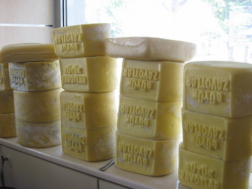Search Results for: UAE
10 results out of 368 results found for 'UAE'.

TÜRKIYE DAIRY PRODUCTION FALLS AS INDUSTRY STRUGGLES WITH INFLATION AND DEPRECIATING LIRA
HIGH INDIAN TEXTILE COMPANY OFFERS VISION OF INTEGRATED DIGITAL PLATFORM LINKING CLOTHING MANUFACTURERS
A wide variety of small garment orders for manufacturers could be made practical to manage through newly created digital systems developed in India, which can also reduce waste and conserve the environment.
“From growing cotton to dying fabric, 6,000 to 7,000 litres of water is spent on making one garment and eventually 30 percent of [apparel products] end up in landfills,” Gunish Jain, CEO of BlueKaktus, a fashion technology and garment manufacturing company, based in New Delhi, told Twinn, “Big brands have been ordering far in excess of their requirement but that is now changing.”…
AL AIN UNIVERSITY PAVES THE WAY FOR MORE QUALITY EDUCATION AND SUSTAINABILITY IN UAE
The United Arab Emirates’ (UAE) private Al Ain University (AAU), located in the oasis city with the same name, is leading the way on sustainable development among local universities, through initiatives to boost quality education and global and national partnerships.
AAU, in Abu Dhabi emirate, on the Oman border, of the United Arab Emirates (UAE), was considered the best UAE university in the 2023 Times Higher Education Impact Ranking (https://www.timeshighereducation.com/impactrankings#!/length/25/locations/ARE/sort_by/rank/sort_order/asc…
EMIRATES UNIVERSITIES’ PUSH SUSTAINABILITY EFFORTS AS COP28 LOOMS
With the United Arab Emirates (UAE) to host the United Nations Climate Change Conference (COP28) summit this November and December, UAE higher education institutions have intensified their focus on climate change and sustainability, greening campus infrastructure, developing courses and engaging with the private sector.…
10 KEY TAKEAWAYS FROM THE ACT MIDDLE EAST TREASURY SUMMIT 2023
UK recession expected by the end of the year
The way the data is evolving there is a 60% chance the UK will be in recession by the end of 2023, or certainly by the early stages of 2024, according to Simon Ballard, Chief Economist, First Abu Dhabi Bank.…
RUSSIA SANCTIONS ARE UNPRECEDENTED – BUT SO IS THE LEVEL OF EVASION
The invasion of Ukraine by Russia has sparked an unprecedented level of international sanctions. However, it has also caused an unprecedented wave of sanctions evasion.
June’s (2023) plenary of the Financial Action Task Force (FATF) had a clear message for the global anti-money laundering community, which includes organisations fighting sanctions evasion: “FATF reiterates that all jurisdictions should be vigilant to current and emerging risks from the circumvention of measures taken against the Russian Federation in order to protect the international financial system.”…
COMPANIES TURN TO GOLD AS ‘BLACK SWAN’ EVENTS LOOM, MID EAST TREASURY EVENT TOLD
Companies are increasingly buying gold amidst unpredictable global market conditions, to shield themselves from potential economic turmoil, spinning off global inflation, rising interest rates and war, according to Matthew Keen, managing director, Evidens Consulting – a UAE-based specialist precious metal consultancy working with banks, brokers, corporations and end consumers.…
TREASURERS BEST PLACED TO HANDLE COMPANY ESG KPIs, EXPERTS TELL DUBAI CONFERENCE
Digitalisation is not only changing financial products and services, it is also shaping new roles and responsibilities of internal teams, pushing businesses to rely more heavily on treasurers to manage their company’s environmental, social, and governance (ESG) KPIs, according to industry insiders.…
RUSSIA’S CLOTHING MARKET WITHSTANDS IMPACT OF UKRAINE INVASION, BY
With western clothing brands and retail outlets quitting Russia following the country’s invasion of Ukraine – killing 9,614 civilians (UN figures) and killing or wounding almost 500,000 soldiers (US government estimates) – clothing exports to Russia from nearby Türkiye have been growing steadily, with some increase in Russian production.…
SOUTH AFRICA UPS ITS AML GAME TO GET OFF THE FATF GREY-LIST
South Africa, added to FATF’s grey list this February (2023) (1), is overhauling its AML regime to escape this listing and better address financial crime and terrorist financing in Africa’s largest economy. The country’s FIU, the Financial Intelligence Centre (FIC), is confident about progress and “optimistic” it will be removed from the Financial Action Task Force (FATF) grey-list before its next mutual evaluation review, maybe beginning next year (2024).…